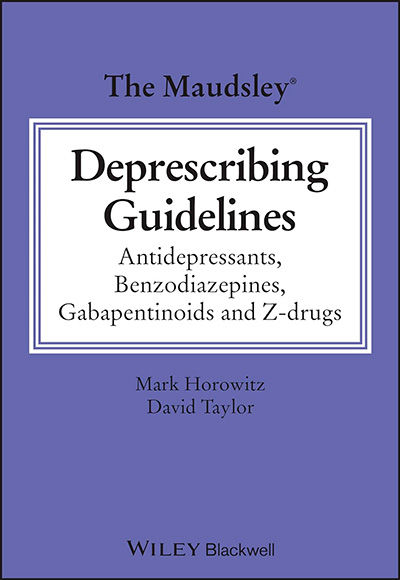Review of The Maudsley Deprescribing Guidelines
- Behroz Dehdari
- Aug 15
- 3 min read

The renowned Maudsley Guidelines series has recently expanded to include a dedicated volume on psychotropic medication tapering. Within Sweden, there remain no nationally endorsed guidelines for the discontinuation of such agents. The authors note, strikingly, that while approximately 1,000 studies have examined optimal methods for initiating antidepressant therapy, only about 20 have addressed the discontinuation process. In clinical practice, methods vary considerably. A common approach is to taper in a manner mirroring initiation — halving the dose weekly until cessation.
For many patients, such an approach is well tolerated. However, a substantial proportion experience clinically significant withdrawal phenomena. Historically, these symptoms have often been misattributed to relapse of the underlying disorder; this interpretation has increasingly been challenged. The authors identify several distinguishing features of withdrawal: the temporal relationship between dose reduction and symptom onset, the presence of distinct and often somatic symptomatology, and symptom resolution upon reinstatement of the medication.
The volume presents a discussion of the putative pathophysiology underlying withdrawal syndromes. While acknowledging the paucity of robust empirical data, the authors delineate key pharmacological principles — notably the non-linear relationship between dose and receptor occupancy. Contrary to lay assumptions, a doubling of dose does not result in a proportional increase in receptor binding. Consequently, a reduction in sertraline from 200 mg to 100 mg is not pharmacodynamically equivalent to a reduction from 100 mg to cessation. The dose–occupancy curve is near inverse exponential, with substantial receptor engagement persisting at low doses. This reality forms the rationale for a hyperbolic taper, whereby dose reductions become progressively smaller toward the end of the taper. The objective is to achieve a linear reduction in receptor occupancy, rather than in milligram dose. It should be stated, however, that a randomized study has yet to demonstrate the superiority of a hyperbolic taper over a linear taper.
Practical challenges arise in preparing such small doses, which, in the terminal phase, may be well below the smallest commercially available formulation. The authors commendably outline several pragmatic strategies to achieve this without the necessity of ex tempore compounding, though this remains a viable option. For venlafaxine — among the agents most strongly associated with severe withdrawal syndromes — one suggested approach is to open capsules and remove a specific number of pellets to achieve the desired decrement.
The book provides tapering schedules for all major antidepressants, benzodiazepines, and gabapentinoids, which are intended as flexible frameworks rather than prescriptive protocols. Some individuals, particularly those with shorter durations of exposure, may tolerate a more rapid reduction.
The potential for nocebo effects arising from heightened focus on potential difficulties and extended tapering durations is addressed. Drawing on six double-blind studies, the authors conclude that this effect is likely modest: approximately 12% of patients experience what may be classified as “pure” nocebo, while 40–50% exhibit withdrawal symptoms directly attributable to dose reduction. Whether these proportions will shift with increased clinical awareness remains an open question; however, psychiatry has a history of underestimating and discounting patient-reported adverse effects.
Minor repetition occurs throughout the text, which some readers may view as a flaw. For most, however, the volume’s utility as a reference work will render this repetition advantageous. The Maudsley Prescribing Guidelines remains a fixture on the shelves of many clinicians; this companion volume warrants an equally prominent place.
Deprescribing guidelines. Antidepressants, benzodiazepines, gabapentinoids and Z-drugs (The Maudsley Prescribing Guidelines series)
Mark Horowitz, David M Taylor
Wiley Blackwell; 2024
592 sidor
ISBN: 978-11-1982-302-5
(Translated from the original review published in Läkartidningen.se)



Comments